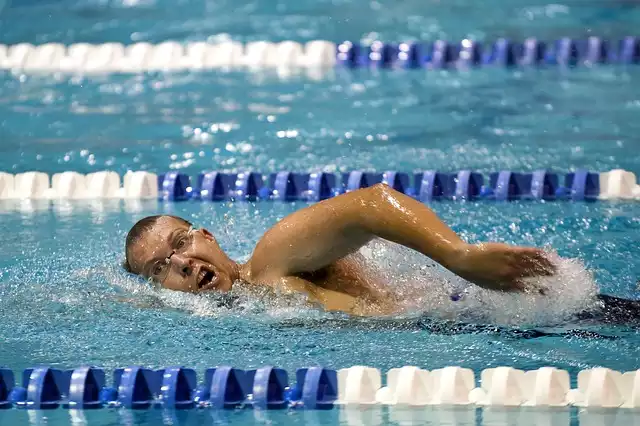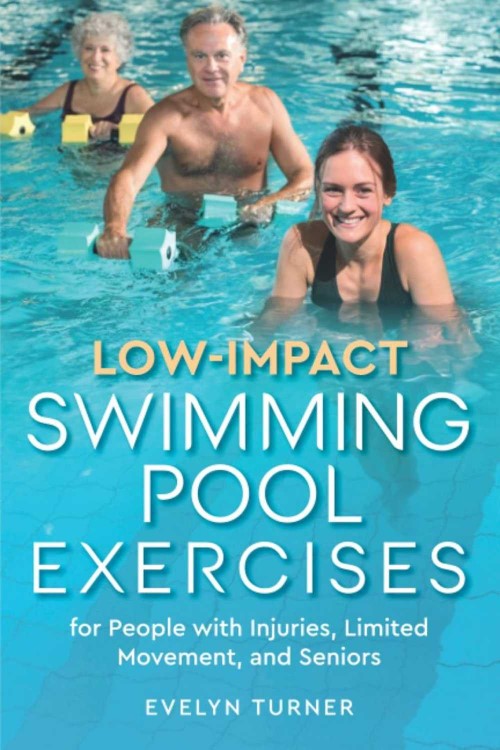Swimming A Good Low Impact Exercise
Swimming pools have long been associated with relaxation and leisure, but they can also serve as a powerful tool for low-impact exercises.
As we age or recover from injuries, high-impact exercises like running or weightlifting may become uncomfortable or even impossible.
This is where low-impact swimming pool exercises come into play.
By utilizing the resistance and buoyancy of water, these exercises can provide a safe and effective workout for all ages and fitness levels.
In this article, we will explore the benefits of low-impact swimming pool exercises, their potential impact on physical health, and some examples of exercises that can be done in the water.
Whether you are looking for a low-impact workout option or seeking rehabilitation for an injury, incorporating these exercises into your routine can help you stay active and improve your overall well-being.
So put on your swimsuit and dive in as we dive into the world of low-impact swimming pool exercises.
Table of Contents Swimming A Good Low Impact Exercise
Effective Pool Workouts for All: Low-Impact Options
Swimming is a fantastic low-impact exercise that provides a full-body workout while being gentle on the joints.
However, it is not the only low-impact option available in the swimming pool.
Aquatic exercises such as water walking, water jogging, and water aerobics offer effective alternatives for individuals looking to improve their fitness without putting excessive strain on their bodies.
These exercises utilize the water’s natural resistance to provide a challenging workout that targets various muscle groups.
Additionally, the buoyancy of the water reduces the impact on joints, making it an ideal choice for individuals with joint pain or injuries.
Whether you are a beginner or a seasoned fitness enthusiast, incorporating low-impact pool exercises into your routine can help you achieve your fitness goals while promoting joint health and overall well-being.
Improve Strength and Endurance Safely: Pool Exercises
Utilizing the swimming pool as a fitness resource can also be an effective means of improving strength and endurance safely.
Pool exercises, specifically designed to target muscular strength and cardiovascular fitness, can provide a dynamic and challenging workout environment.
Movements such as pool resistance training, water lunges, and water planks engage multiple muscle groups, helping to build strength and stability.
Furthermore, the resistance offered by the water enhances muscular endurance and promotes cardiovascular fitness, all while minimizing the risk of impact-related injuries.
Incorporating these pool exercises into your fitness routine can lead to significant improvements in overall strength and endurance, allowing you to achieve your fitness goals in a safe and engaging manner.
Low-Impact Aqua Aerobics: Benefits and Techniques
Aqua aerobics, also known as water aerobics, is a low-impact exercise format that offers a multitude of benefits for individuals of all fitness levels.
The buoyancy of water reduces the impact on joints and muscles, making it an ideal option for those with joint pain, arthritis, or individuals recovering from injuries.
In addition to being gentle on the body, aqua aerobics provides excellent cardiovascular conditioning and helps improve flexibility, balance, and coordination.
The water’s resistance adds an extra challenge to the workout, effectively toning and strengthening muscles.
Techniques involved in low-impact aqua aerobics can include a variety of exercises such as water walking, jogging, kickboxing, and dancing.
By incorporating low-impact aqua aerobics into your fitness routine, you can enjoy a fun and effective way to improve overall fitness and well-being.
Gentle on Joints: Swimming Pool Workouts
Swimming pool workouts are a fantastic option for individuals seeking low-impact exercises that are gentle on the joints.
The buoyancy of water helps to reduce the strain and impact on joints, making it an ideal choice for individuals with arthritis, joint pain, or those recovering from injuries.
Swimming utilizes the entire body, engaging muscles from the arms and shoulders to the legs and core, providing a full-body workout without placing excessive stress on the joints.
Additionally, the resistance of the water offers a challenging yet low-impact environment for cardiovascular conditioning, allowing individuals to improve their fitness levels without compromising their joint health.
Whether it’s swimming laps, water walking, or engaging in aqua aerobics, incorporating swimming pool workouts into your routine can provide you with a refreshing and effective way to stay active and maintain joint health.
Low-Impact Resistance Training in the Pool
The pool offers a unique setting for low-impact resistance training, allowing individuals to strengthen their muscles without placing excessive strain on their joints.
By utilizing the resistance of the water, various exercises can be performed to target different muscle groups, promoting strength, endurance, and overall fitness.
For example, water dumbbells can be used to perform bicep curls, shoulder presses, and tricep extensions, providing a challenging workout for the upper body.
Leg exercises such as water squats and lunges can be performed to target the lower body, while core exercises like water planks and flutter kicks engage the abdominal muscles.
The resistance provided by the water adds an extra level of difficulty to these exercises, making them effective for building muscle strength.
Incorporating low-impact resistance training in the pool can be a great alternative for individuals looking to improve their strength and fitness levels while minimizing the risk of joint injuries.
Strengthen Core and Improve Balance: Pool Exercises
Engaging in pool exercises not only allows individuals to strengthen their muscles but also helps improve core stability and balance.
The buoyancy of the water provides a supportive environment that reduces impact on joints, making it ideal for those with physical limitations or injuries.
A great exercise for core strength and balance is the water plank, where one can assume a push-up position with their forearms resting on a pool noodle.
This exercise challenges the abdominal muscles while also activating the stabilizing muscles in the shoulders and back.
Additionally, performing standing leg lifts or knee raises in the water can help improve balance by targeting the muscles in the lower body and engaging the core muscles for stability.
By incorporating these pool exercises into a fitness routine, individuals can effectively strengthen their core muscles and improve their overall balance, all while enjoying the refreshing and therapeutic benefits of the water.
Get in Shape without the Strain: Pool Workouts
Swimming is a fantastic low-impact workout that offers a multitude of benefits for individuals looking to get in shape without straining their joints.
In the pool, exercises such as water jogging and aqua aerobics can provide a challenging cardiovascular workout without the jarring impact typically associated with high-impact exercises.
The resistance of the water adds an extra level of resistance, helping to tone and strengthen muscles while minimizing stress on the body.
Additionally, swimming laps can improve overall endurance, promote weight loss, and enhance flexibility.
With the wide array of swimming strokes and exercises available, individuals can tailor their pool workouts to target specific muscle groups and fitness goals.
By incorporating these low-impact swimming pool exercises into their fitness routine, individuals can enjoy a fun and effective way to improve their overall fitness levels while minimizing strain on their bodies.
Maximize Your Pool Exercise Routine: Low-Impact Tips
In order to maximize the effectiveness of your pool exercise routine and ensure a low-impact workout, there are a few key tips to keep in mind.
First and foremost, it is important to maintain proper form throughout your exercises.
This includes engaging your core, keeping your body aligned, and using controlled movements.
By doing so, you can effectively target the desired muscle groups while minimizing strain on your joints.
Additionally, varying your exercises and incorporating a mix of cardiovascular activities and resistance training can help prevent muscle imbalances and keep your workouts engaging.
Utilizing pool equipment such as water weights, resistance bands, and kickboards can further enhance your workout and add an extra level of challenge.
Lastly, don’t forget to listen to your body and adjust the intensity and duration of your exercises as needed.
By following these low-impact tips, you can maximize the benefits of your pool exercise routine and maintain a safe and effective workout.
Swimming pool exercises offer a low-impact and effective way to improve strength, flexibility, and cardiovascular fitness.
Whether you’re recovering from an injury, looking for a low-impact workout option, or simply want to switch up your exercise routine, these pool exercises are a great option.
Remember to always consult with a professional before starting any new exercise program and listen to your body to avoid overexertion.
With consistency and proper form, these low-impact swimming pool exercises can help you achieve your fitness goals and improve your overall health.
So grab your swimsuit and dive into a refreshing and challenging workout in the pool!
FAQ
What are some low-impact swimming pool exercises that can help improve cardiovascular fitness?
Some low-impact swimming pool exercises that can help improve cardiovascular fitness include water walking, water jogging, flutter kicking with a kickboard, and arm exercises with water weights.
These exercises provide resistance within the water while being gentle on the joints, making them ideal for individuals with joint pain or injuries.
Swimming laps at a moderate pace or doing interval training can also be effective in improving cardiovascular endurance without putting excessive strain on the body.
How can swimming pool exercises help individuals with joint pain or arthritis?
Swimming pool exercises can help individuals with joint pain or arthritis by providing a low-impact environment that reduces stress on the joints while allowing for increased range of motion and flexibility.
The buoyancy of water supports the body, making movements easier and less painful.
Additionally, water resistance helps to strengthen muscles without putting excessive strain on the joints.
Regular swimming pool exercises can improve overall fitness, reduce inflammation, and alleviate joint stiffness, making it an effective form of physical therapy for individuals with joint pain or arthritis.
Are there specific swimming pool exercises that target different muscle groups for overall strength training?
Yes, there are specific swimming pool exercises that can target different muscle groups for overall strength training.
For example, freestyle and butterfly strokes can target the upper body muscles, while breaststroke can work the chest and triceps.
Additionally, treading water can engage the core muscles, and kicking exercises can target the legs.
By incorporating a variety of strokes and movements, swimmers can effectively engage multiple muscle groups for a comprehensive strength training workout.
How often should someone incorporate low-impact swimming pool exercises into their fitness routine for optimal results?
Incorporating low-impact swimming pool exercises into a fitness routine two to three times a week can be beneficial for optimal results.
This frequency allows for adequate recovery time while still providing consistent exercise to improve cardiovascular fitness, strength, and flexibility.
Mixing these pool exercises with other forms of exercise can also enhance overall fitness levels and prevent boredom or plateaus in progress.
Can swimming pool exercises be beneficial for individuals recovering from injuries or surgeries?
Yes, swimming pool exercises can be highly beneficial for individuals recovering from injuries or surgeries.
The buoyancy of water reduces stress on joints and muscles, allowing for low-impact movements that can help improve flexibility, strength, and overall mobility.
Additionally, the resistance of water can aid in building muscle strength without causing strain.
This form of exercise can also promote circulation and reduce inflammation, contributing to a faster and more effective recovery process.
It is important to consult with a healthcare provider or physical therapist to determine the most appropriate exercises based on the specific injury or surgery.








